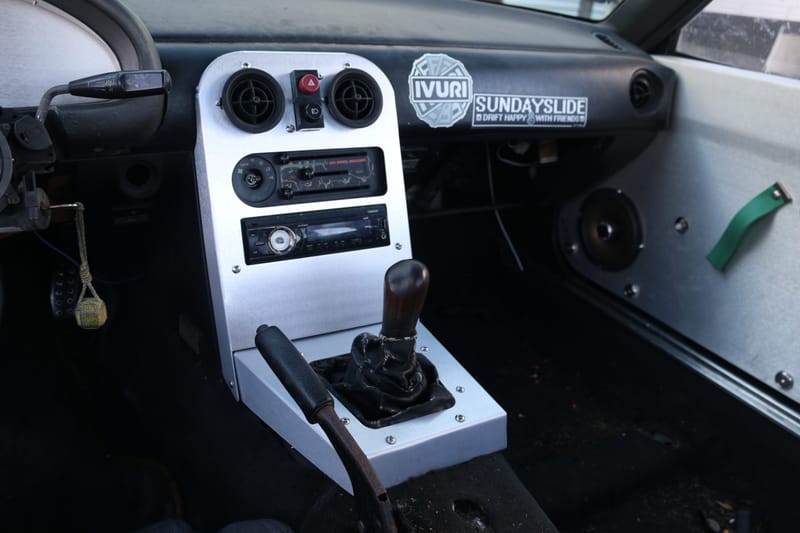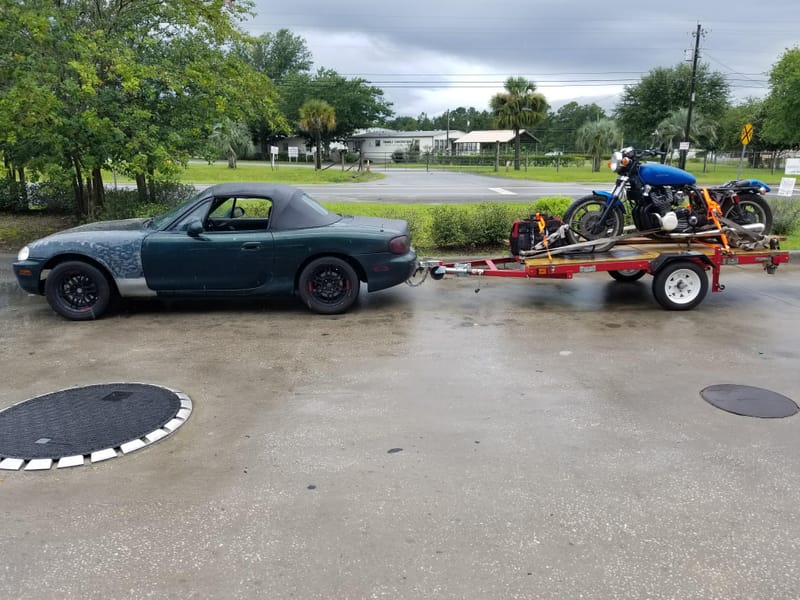Miata Ownership in Tropical Climates: Cooling, Flood, and UV Care
Hot-climate Miata tips: Use shade, ceramic tint, dash mat; crack windows. Condition vinyl/top; clear soft-top drains. Avoid floods; keep ECU/relays dry. NB/NC/ND—clean condenser, verify fans, fix blend-door foam, charge by weight.

Owning a Miata in hot, humid, flood-prone regions means fighting three enemies at once: extreme solar heat when parked, sudden monsoon flooding, and relentless UV that ages tops, plastics, and paint. Real tests show sun-parked cabins can average well over 100°F within an hour, with dashboards getting hot enough to soften adhesives and haze plastic windows. Even a shaded car can creep toward triple-digit cabin temps. That’s why interiors feel baked, rear windows cloud faster, and vinyl or leather hardens and cracks sooner in the tropics.
Early NA cars started with R12 and later moved to R134a. Many weak A/C complaints on converted NAs come down to half-finished conversions, incorrect oil, an old receiver-drier, a tired condenser, and marginal fans. A proper conversion uses compatible oil, a new drier, full evacuation, and a weighed charge. On NB, NC, and ND models that already run R134a, poor output in tropical humidity usually points to airflow or sealing: dirty or bent condenser fins, low refrigerant charge, lazy fans or relays, or blend-door foam leaks behind the dash. Fix those basics before blaming the refrigerant.
Reduce the Heat Load Before You Drive
Start with a quality reflective sunshade; it’s the cheapest way to knock down dash and cabin surface temps when parked. Crack the windows slightly where it’s safe to help hot air escape. If you’re investing in window film, shop by technical metrics like total solar energy rejection and standardized infrared rejection, not just marketing claims. And always confirm your local legal limits for visible light transmission before tinting.

Get the A/C System Back to Full Strength
Give the condenser face some love: straighten fins and clear debris so fans can do their job in gridlock heat. Verify both fan speeds where applicable and make sure relays and motors are healthy. Always charge by weight, not just pressure, and replace the receiver-drier after major work. On older cars, reseal the foam around blend doors so cold air isn’t bleeding into the dash cavity. Note that NA, NB, and NC didn’t ship with a cabin filter, and the ND doesn’t have one from the factory either, but the ND has a simple retrofit pocket that helps keep the evaporator cleaner and reduce odors in dusty, humid cities.

Engine Cooling for Tropical Traffic
Don’t run near-pure water just because you’re in the tropics. A 40–50% ethylene-glycol mix is a smart middle ground: you trade a tiny bit of heat capacity for corrosion inhibitors and a higher boiling point under pressure. Push the glycol much past 60% and you’ll actually hurt heat rejection and thicken the fluid enough to work your water pump harder. Use a refractometer to check concentration rather than guessing.
Prioritize Airflow, Then Everything Else
A fresh, efficient radiator plus proper ducting often “magically” fixes chronic warm creep because you’re finally forcing all air through the core. Use a well-designed shroud with a small standoff from the fins so the whole surface sees flow, and keep flexible flapper doors so air can bypass at speed. Reinstall the stock undertray if it’s missing, without it, high-pressure air piles under the nose at a light and stalls flow through the radiator. High-flow fan setups, ideally with modern motors and proper spacing, help a ton in stop-and-go. On NA/NB cars, a coolant reroute and meticulous bleeding prevent hot spots and air pockets that show up on long climbs or during brutal traffic.
Flood Season Pointers
Keep Water Out in the First Place
On NA and NB models, clean the two rear rain-rail drains behind the seat-belt towers, and inspect the rain rail itself; a cracked rail sends water straight into the cabin or trunk no matter how clean the drains are. Up front, clear the cowl drains so you don’t end up with wet footwells. NC and ND owners frequently report cowl-area seepage at plastic inserts; lifting the cowl and resealing those grommets is smart preventive maintenance before the rainy months.
Street-Flood Rules
If you can’t judge depth and current, don’t go. As a rule of thumb, a foot of moving water can float many cars, and two feet can push around bigger vehicles. If there are barricades, obey them. The safest option is always to turn around and find a higher route rather than risking an engine ingesting water or getting stranded in rising water.

If the Car Got Soaked (First 24 Hours)
Do not start the engine. Disconnect the battery and arrange a tow. Starting a wet engine risks hydrolock and electrical damage. Strip the interior early: pull seats and carpet, lift the sill trim, and get airflow through the cabin with fans and dehumidification. Replace any jute or padding that stayed wet to prevent mold. Check all fluids, engine, transmission, differential, and brake, for contamination, and clean grounds and connectors methodically. Contact your insurer early and understand that significant submersion can lead to a salvage title; be cautious about buying post-storm “deals” without documentation.
UV and Humidity Care (Tops, Plastics, Paint)
Keep the Soft Top on a Schedule
Fabric and vinyl tops need gentle, purpose-made cleaners and UV protectants. Harsh detergents strip protective layers and weaken stitching. In the tropics, a quarterly clean-and-protect rhythm is realistic. For NA/NB plastic rear windows, stick to mild soap and microfiber; periodic plastic polishes restore clarity. High cabin and dash temperatures accelerate haze and embrittlement, so combine cleaning with heat-reduction habits. If the rain rail is brittle or cracked at the rivet holes, replacement is the only real fix.

Why Plastics Fail (and How to Slow It Down)
UV exposure breaks polymer chains over time, turning trim brittle and chalky. That’s the science behind using quality interior protectants, window film, and paint protection film beyond aesthetics. Think of film and coatings as sunscreen for your car: they slow the damage, they don’t stop physics.
Paint and Interior Surfaces
Wash frequently to remove acidic grime, decon a couple of times a year, and keep a sacrificial layer, ceramic or wax, on the paint to slow clear-coat oxidation. Inside, a good sunshade and a thoughtful window-film choice reduce thermal cycling, helping dashes and door cards survive the long, bright months.
Mold and A/C Hygiene in Humid Weather
Make it a habit to dry the evaporator: before shutting the car off, run the blower for 30–60 seconds with the A/C off to evaporate leftover moisture. Remember the filter reality: NA, NB, and NC didn’t get a cabin filter, and ND doesn’t have one stock, though an easy retrofit exists. After big storms, do a quick sniff test, lift the mats and feel the carpet. If it’s damp, track down rear and cowl drains immediately and dry the area to stop mold before it starts.

Seasonal Maintenance Calendar for the Tropics
A week or two before monsoon season, clean the rear and cowl drains, inspect the rain rail, verify both fan speeds, and clean the condenser and radiator faces. Make sure the factory undertray is installed, and check coolant concentration with a refractometer. Mid-season, repeat the drain cleaning after heavy leaf drop, inspect carpets after major storms, and reseal any suspect cowl inserts. During dry, high-UV months, refresh protectants on the top and trim, renew your sunshade, reassess your film or PPF, and polish an NA/NB plastic window if it’s getting hazy.




